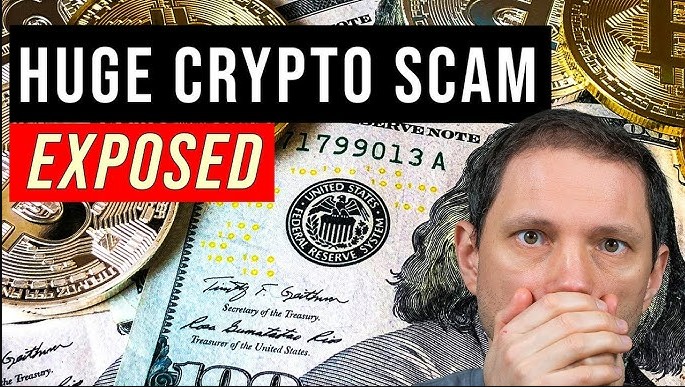Liffecoin.com Scam -A Deceptive Crypto Project
In the crowded, hype-driven world of crypto projects and online token sales, a polished website and slick marketing copy do not equal legitimacy. Liffecoin.com is one such project that has attracted mixed signals — some automated trust checks flag it as suspicious and several user reports describe troubling interactions, while a few safety scanners give it a more neutral score. In this longform review I’ll walk through first impressions, technical signals, marketing claims, user-facing behaviour, and the key red flags that suggest high risk. This is an informational investigation only — no recovery advice is included.
1) First impressions: looks good, but looks can deceive
The Liffecoin.com landing pages present the usual crypto marketing staples: roadmaps, tokenomics summaries, promises of future listings and community growth, and calls to join presales or exclusive rounds. The brand voice is confident, and the visuals are professionally produced. That’s the point: bad actors know a good design lowers suspicion and increases conversions.
A well-designed site is not proof of legitimacy — it’s only the opening act. The important work is in verifying the team, code, on-chain activity, audits and independent community signals; that’s where many projects either pass or fall apart.
2) Automated trust checks and safety scanners — mixed but worrying signals
Several website safety/ reputational scanners register strong warning signs for Liffecoin.com. One major website trust engine rates Liffecoin.com with a very low trust score and classifies the domain as suspicious — an automated flag that typically aggregates domain age, hosting patterns, hidden registration data and negative signals.
Another malware/anti-virus scanner lists Liffecoin.com as suspicious and notes that the domain’s ownership is not publicly verifiable and that it was registered recently through a mainstream registrar while the owner remains unknown. Those are standard markers of sites built to be opaque.
At the same time, some safety checkers show a more neutral “above-average” safety score, citing technical security markers (HTTPS, working pages) rather than reputational history. That mixed picture — technical security but poor reputational indicators — often means the site is technically sound but socially untrusted. In practice, social trust and transparency matter more than a green padlock.
3) Domain age, WHOIS privacy and ownership opacity
A fast way to evaluate a crypto site is to check the domain registration history and ownership disclosure. Liffecoin.com uses WHOIS privacy or otherwise hides registrant details, which makes tracing ownership difficult. Privacy services are legitimate in many cases, but combined with other red flags they reduce accountability and increase risk.
Automated tools flagged that the domain was created relatively recently and is associated with privacy-protected registration — a pair of attributes often found in short-lived promotional projects or sites that aim to avoid regulatory or reputational scrutiny. When ownership is masked, it becomes much harder for investors and researchers to verify claims about the team, business entity or jurisdiction.
4) What users are reporting — anecdotal complaints and cautionary comments
Independent review aggregators contain user comments and at least one report describing a pattern familiar to crypto victims: extended contact from a friendly representative followed by silence when issues arise. Some community reports on review sites describe users who felt misled or cut off after initial engagement, a pattern consistent with high-risk token sales and presale schemes. Those anecdotal reports are not a legal proof of fraud, but they are meaningful when they cluster around the same behaviours.
Because genuine community feedback is one of the strongest real-world indicators of project health, the presence of even a handful of similar complaints warrants elevated suspicion.
5) Marketing claims, tokenomics and “too good to be true” promises
Liffecoin.com’s marketing relies on classic enticements: fast adoption, early-bird rewards, and the promise that token price appreciation is imminent after listing events. Frequently seen claims include fixed high APRs for staking, priority presale allocation, and leveraged potential returns.
Realistically, any project promising guaranteed or unusually large short-term returns should be treated skeptically. Token price moves are driven by market demand and liquidity — not by a website’s marketing bullet points. If a project’s pitch focuses heavily on guaranteed upside and urgency (limited slots, countdowns), that’s an invitation to examine the underlying economics and on-chain evidence, not a reason to invest blindly.
6) Transparency about the team, code and audits — largely absent
Legitimate crypto projects make their code public (or provide verifiable smart contract addresses), publish independent smart-contract audits, and offer transparent bios for core contributors that can be validated on LinkedIn, GitHub or via past project history. Liffecoin.com provides limited or unverifiable information on these fronts.
When a project refuses to publish contract addresses, or the addresses provided have no verifiable token distribution/activity and no audit, that’s a major red flag. Without open, auditable smart contracts and third-party verification, there’s no meaningful way to confirm that tokenomics are being honoured on-chain or that owner privileges (such as minting or taxation) don’t allow the operators to drain liquidity.
7) Payment methods and presale mechanics — watch for irreversible flows
Reports and site copy indicate the project uses standard crypto rails for token purchases — typically irreversible wallet transfers. That is standard for legitimate ICOs and presales, but it also benefits bad actors because crypto payments are hard to reverse.
If the presale process requires off-chain payments, manual transfers, or routing funds through third-party wallets rather than a verifiable smart-contract mechanism, that is a serious concern. Always prefer projects that accept purchases through transparent, on-chain mechanisms you can independently verify.
8) On-chain activity (or lack thereof)
A critical test that every crypto project must pass is clear, verifiable on-chain activity: token contract address, distribution transactions, liquidity pool creation, and verifiable transfers to exchanges or staking contracts. For Liffecoin.com, public on-chain confirmation is either absent or not readily discoverable from the site itself. That opacity prevents independent verification of token supply, liquidity locking, or owner privileges.
When token contract data is missing from the project site, or the contract has no liquidity locked on reputable DEXes, the risk that operators can rug-pull or control supply is materially higher.
9) Reputation networks and aggregated scam checkers — convergence matters
Multiple independent reputation checkers flagged Liffecoin.com with negative or suspicious scores (low trust rating, flagged as suspicious by security scanners). Even a single reputable scanner flag is notable; multiple flags across independent engines create a converging indicator of risk. Some scanners do show a neutral technical score while still warning about reputational risk — the divergence itself is a signal: the site is technically intact but socially or operationally questionable. ScamAdviser+2Gridinsoft LLC+2
Converging negative signals — hidden ownership, recent domain, user complaints, missing on-chain proof — are the pattern that frequently precedes confirmed fraud cases in the crypto space.
10) Typical scam patterns that match Liffecoin’s signals
Putting the pieces together, the patterns that raise the highest risk are:
-
Opaque ownership and masked WHOIS.
-
Recent domain registration and limited public track record.
-
Heavy marketing focused on urgency and quick gains.
-
Lack of published, auditable smart contracts or third-party audits.
-
User anecdotes of disappearing communication or unresolved concerns.
When these traits appear together they match common scams: presale shills that collect early funds, simulated dashboards that show fake balances, and then a sudden loss of access or liquidity after sufficient funds are gathered.
11) What we can say with confidence
-
Automated reputation services have flagged Liffecoin.com as suspicious or low trust — that’s a documented, objective signal.
-
Independent user reviewers and aggregated comment sites include reports that align with common scam behaviours (loss of contact, stalled payouts).
-
Some technical safety checkers register the site as technically valid (HTTPS, reachable), which explains why it may look safe despite reputational issues.
Those three points together explain the mixed impressions you’ll find online: the site functions like a normal site, but social trust metrics and community reports pull the other way.
12) Verdict — how to interpret the risk
Based on the totality of indicators — hidden registration, recent domain history, suspicious classification by multiple reputation tools, limited verifiable on-chain evidence and clustered user complaints — Liffecoin.com should be considered high-risk. The project displays many of the early warning signs that historically precede confirmed fraudulent token schemes.
This means that, absent clear, verifiable evidence of audited smart contracts, publicly identifiable and reputable team members, locked liquidity and demonstrable on-chain activity, treats Liffecoin.com as speculative at best and potentially malicious at worst.
Report Liffecoin.com Scam and Recover Your Funds
If you have lost money to Liffecoin.com Scam, it’s important to take action immediately. Report the scam to Jayen-consulting.com, a trusted platform that assists victims in recovering their stolen funds. The sooner you act, the better your chances of reclaiming your money and holding these fraudsters accountable.
Scam brokers like Liffecoin.com continue to target unsuspecting investors. Stay informed, avoid unregulated platforms, and report scams to protect yourself and others from financial fraud.
Stay smart. Stay safe.






